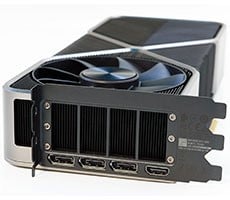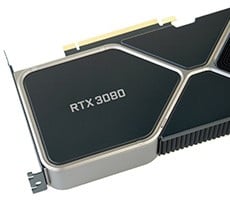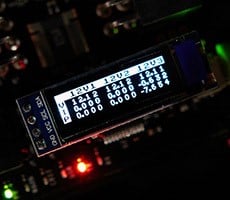X79 Motherboard Roundup: ASRock, ASUS, Gigabyte
ASUS Sabertooth X79
Despite its thematic posturing, the Sabertooth X79 does have some impressive heat-dissipating features. The choke, cap, and MOSFET components are built for toughness and longevity and have been certified through “military-grade” testing, which is a good start.
The Thermal Armor consists of two out-of-the-ordinary looking multilayered heatsinks, one over the southbridge and one on top of the rear I/O panel. Both bulky black plastic heatsinks have fans that expel air away from the components (though the one over the I/O panel is optional and must be installed by the user). A heat pipe, partially covered by a bulky metal heatsink positioned above the CPU socket, draws heat away from that area to the Thermal Armor fan, where it gets blown out the back of the case.
The Thermal Radar aids the effort by using multiple sensors all over the motherboard to identify temperatures and automatically adjusting fan speeds accordingly. Users can set parameters for Thermal Radar in the BIOS.
In case you were doubting ASUS’ sincerity regarding the durability of the Sabertooth X79, the company is putting its money where its mouth is by offering a 5-year warranty.

ASUS Sabertooth X79
|
| CPU Chipset Memory Multi-GPU Support Expansion Slots Storage LAN Audio IEEE 1394 USB Ports Form Factor |
Intel Socket 2011 for 2nd Generation Core i7 Processors Supports Intel Turbo Boost Technology 2 Intel X79 8 x DIMM, Max. 64GB, DDR3 1866/1600/1333/1066 MHz Non-ECC, Un-buffered Memory Quad Channel Memory Architecture Supports Intel Extreme Memory Profile (XMP) Supports NVIDIA Quad-GPU SLI Technology Supports AMD Quad-GPU CrossFireX Technology 2 x PCIe 3.0/2.0 x16 (dual x16) *1 1 x PCIe 3.0/2.0 x16 (x8 mode) *1 2 x PCIe 2.0 x1 1 x PC Intel X79 chipset : 2 x SATA 6Gb/s port(s), brown 4 x SATA 3Gb/s port(s), black Supports Raid 0, 1, 5, 10 Marvell PCIe 9128 controller : 2 x SATA 6Gb/s port(s), gray ASMedia ASM1061 controller : 1 x Power eSATA 6Gb/s port(s), green 1 x eSATA 6Gb/s port(s), red Intel 82579V, 1 x Gigabit LAN Controller(s) Realtek ALC892 8-Channel High Definition Audio CODEC - Supports : Jack-detection, Multi-streaming, Front Panel Jack-retasking Audio Feature : - Absolute Pitch 192kHz/ 24-bit True BD Lossless Sound - Blu-ray audio layer Content Protection - Optical S/PDIF out port(s) at back panel VIA 6315N controller 1 x IEEE 1394a port(s) (1 at back panel) ASMedia USB 3.0 controller : 6 x USB 3.0 port(s) (4 at back panel, blue, 2 at mid-board) Intel X79 chipset : 14 x USB 2.0 port(s) (6 at back panel, black, 8 at mid-board) ATX Form Factor, 12 inch x 9.6 inch ( 30.5 cm x 24.4 cm ) |
The Sabertooth X79 (ATX form factor) supports a total of 64GB of DDR3-1866 quad channel memory over 8 DIMMS and has six expansion slots, three of which support PCI-E 3.0. The board supports four-way SLI/CrossFireX; three cards can run at x8, and a dual-card setup can run at x16.
There are ten total SATA ports; six from the chipset (with RAID 0,1,5, and 10 support), two from a Marvell controller, and eSATA and Power eSATA via an ASMedia controller. Four of the chipset SATA ports are 3Gb/s, but the rest are all 6Gb/s.
An ASMedia controller supports six USB 3.0 ports, while the chipset delivers another fourteen USB 2.0 ports. The board also has a LAN port, FireWire, S/PDIF out, and six audio jacks. The BIOS Flashback button, which lets users flash the BIOS without booting or entering the BIOS, is found on the back I/O panel.
ASUS is all about giving users fine control over every possible aspect of their systems via the UEFI BIOS, and its X79-based motherboards offer control in spades, including the new DIGI+ Power Control that offers power control for the CPU and memory with three digital voltage controllers.
Other notable features include the MemOK button for automatically correcting any memory issues; ESD (electrostatic discharge) prevention; USB 3.0 performance boost with UASP (USB Attached SCSI Protocol); and SSD caching.
Fortunately, ASUS still supports SSD caching, even though Intel ditched it for some reason with the X79 chipset. ASUS’ version allows the use of an SSD for caching with no capacity limitations.
The Sabertooth X79 is designed with overclockers in mind, braced in advance for the extremes its users will ask it to endure.






